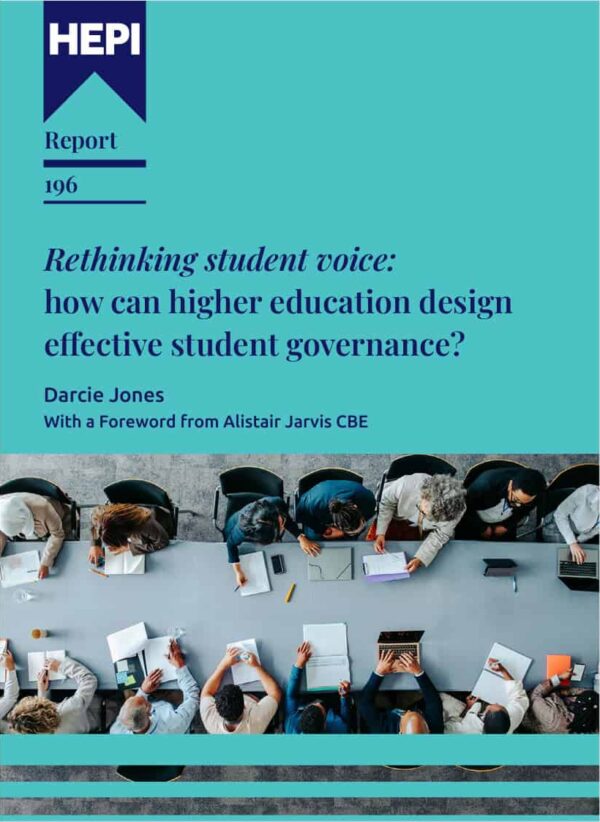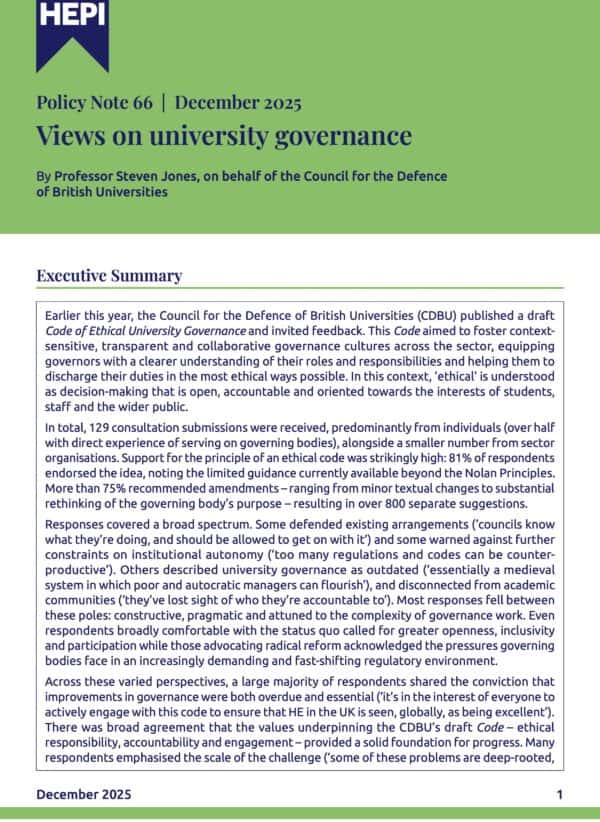The hidden cost of learning: how financial strain is reshaping student life
This HEPI guest blog was kindly authored by Cheryl Watson, VP of Education, UK at TechnologyOne.
Rising costs are now a defining feature of the student experience in the UK. What once felt like an educational ‘coming of age’ for young people is, for many, becoming a difficult balancing act between academic ambition and financial survival.
From housing and transport to food and essential tech, students today face relentless financial pressures just to participate in university life. For institutional leaders, the evidence is clear: the financial landscape is changing, and approaches to student engagement and support must change with it.
A growing financial gap in UK higher education
Financial pressures on students are not new but are growing in scale and complexity. The joint Minimum Income Standard for Students (MISS) 2024 research with HEPI and the Centre for Research in Social Policy (CRSP) at Loughborough University found that a typical full-time student living away from home needs around £244 per week to maintain a minimum standard of living. Yet, most face a significant shortfall even with part-time work and maintenance support.
This gap impacts attendance, well-being, debt levels, and student retention. National data shows that 30% of students take on additional debt to cover basic living costs. At the same time, HEPI and Advance HE’s 2025 Student Academic Experience Survey found that more students are working part-time (68%) than not, often juggling jobs alongside demanding timetables.
One student from the recent MISS focus groups summed up the reality:
Even [like] knowing that I’m in my overdraft…I know it’s interest-free and stuff, but having to rely on it is not ideal, and I want to work to try and get out of it, but also like I can’t afford to.”
It’s a cycle, and you constantly max it out every year, and then you’re constantly working to pay it back.
This financial tightrope is increasingly common.
How student life is being redefined by cost pressures
Students are making tough choices daily between travel, food, work, and study. Financial stress is changing not just what students can afford, but also how they experience university life on a day-to-day basis.
While pressures vary, the underlying theme remains consistent: rising costs are reshaping the student experience in real-time.
The new commuter reality
Many universities still operate around the traditional student living on campus, but according to the Sutton Trust, over 50% of UK students go to university where they grew up and students from poorer backgrounds are three times more likely to commute from home.
For many, this is often because they cannot afford to live near campus. This has real academic consequences, with many students missing classes due to travel costs and disconnected timetables.
I live in Sheffield but a lot of the people in my class seem to commute and there’ll be times where like most of the class don’t turn up for a certain seminar and it’s because… it just wouldn’t make sense to pay all that money to come for an hour and a half and then just leave again.
Without more flexible, student-aware scheduling and targeted support, commuter students risk being structurally disadvantaged.
Technology isn’t optional
Access to digital tools is now essential for participation in academic life. From lecture recordings to online submissions, students are expected to stay constantly connected and equipped.
You definitely need a laptop as well because although the University library provides computers, especially during exam season, you have to book them in advance, and they’ve already been taken up.
For many, the cost of keeping up with technology adds to financial pressures, creating further barriers to participation.
Living with financial stress
Financial pressure is a constant presence for many students. Overdrafts are used regularly, part-time work is essential, and mismatches between payment schedules and bills force difficult choices.
In 2023, HEPI found that more than a quarter of universities operate food banks to support students, while rising rent costs leave little left for essentials.
The difference between first year and second year is that you have that comfort blanket of it, but by the time you get into second year, you’ve already used it, and you’ve got nothing to help you anymore.”
These aren’t one-off lapses in budgeting. They’re the result of an unsynchronised system that does not reflect the financial reality students are working within.
Missing out on student life
Financial pressures also limit participation in the social and community aspects of university life that are vital for wellbeing and development.
Especially in the SU, it’s not ideal because lots of societies will do socials there so if you can’t afford that… It might seem silly, but if you’re part of a sports society then there is some sort of expectation to go to Sports Night on a Wednesday most weeks so that obviously adds up if you’re going most weeks.
MISS24 found that 55% of students missed out on social experiences and 53% skipped extracurricular activities due to financial constraints.[AC1]
Opting out is often the only option, but it comes at a cost to confidence and connection
Why this matters for universities and policymakers
Financial stress is no longer a fringe issue in UK higher education. When 30% of students are taking on extra debt just to cover essentials, and many are skipping classes or missing out on key experiences, the impacts on retention, well-being, and academic outcomes cannot be ignored.
The disconnect between what students need and what current funding models assume continues to grow. Part-time work and family contributions are often treated as standard, despite being unrealistic for many students.
What’s next: Building an evidence base for change
If the Minimum Income Standard for Students 2024 brought much-needed clarity to the financial pressures facing undergraduates, this year’s follow-up takes that work a step further.
The upcoming report, Minimum Income Standard for Students 2025 (MISS25), focuses specifically on first-year students living in purpose-built accommodation, offering the most detailed insight yet into the cost of starting university life in the UK.
The findings are stark. Those on minimum support face a funding gap that must be filled by family or debt. The report also reveals a growing mismatch between student needs and how maintenance systems are designed, particularly for those without access to parental support.
For institutional leaders, policymakers and student advocates, we encourage you to read closely, and to consider how your planning, funding and engagement strategies can respond to what today’s students are telling us.
Click the link below to sign up for a copy of the MISS25 report when it’s ready.
Sign up for a copy of the report
TechnologyOne is a partner of HEPI. TechnologyOne is a global Software as a Service (SaaS) company. Their enterprise SaaS solution transforms business and makes life simple for universities by providing powerful, deeply integrated enterprise software that is incredibly easy to use. The company takes complete responsibility to market, sell, implement, support and run solutions for customers, which reduce time, cost and risk.







Comments
Carolyn McInnis says:
Great article Cheryl, highlighting a really important issue. The pressures are similar in Australia – even though recruitment appears to be holding up, universities are noticing student load dropping as their students need to work more and study less to make ends meet.
Reply
Paul Wiltshire says:
It is indeed a great article highlighting an important issue. But the answer is to have far far fewer students in the first place, so that those who do attend will at least have a chance of looking forward to decent earnings to make up for the financial pressures involved in attending Uni. The current system is producing 100’s of 1000’s of graduates every year with a huge debt and no better chances of a decently paid career and will start out in entry level jobs on minimum wage or not much more. So the Govt needs to drastically cut student numbers.
Reply
Add comment